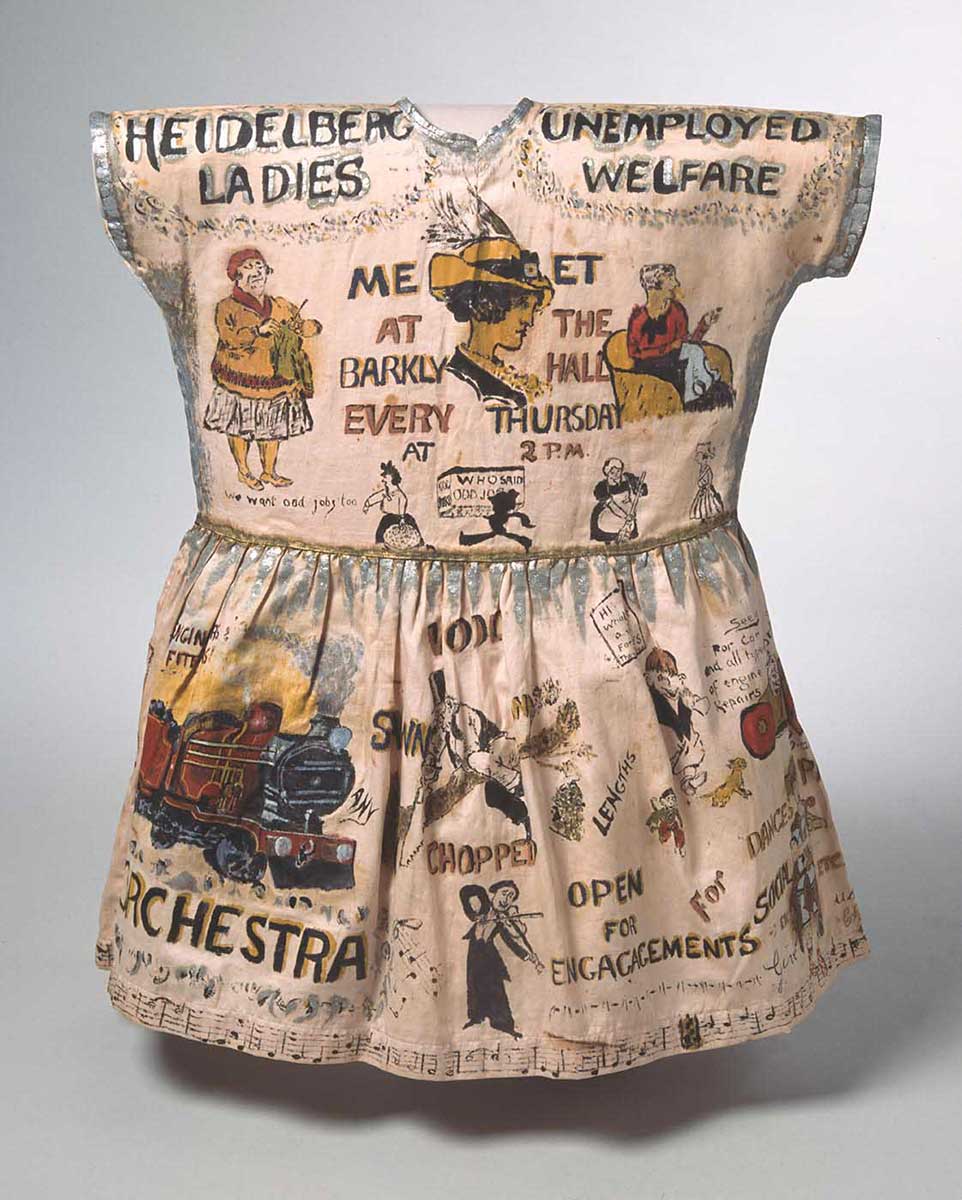This dress was worn by a girl whose parents hoped it would win a cash prize in a Depression-era competition.
It is painted with images and slogans which promoted the work of the Heidelberg Unemployment Bureau and the father’s availability for a job.
The dress is a reminder of the hardship and desperation that many families faced during the Depression years, and the ingenuity with which they tried to overcome their circumstances.
Depression
The Chalcrafts emigrated to Australia from Wales with their three-year-old daughter, Patricia, in 1926. They settled in Heidelberg, Melbourne.
With the onset of the Depression, Patricia’s father lost his job at the Shell Company. Desperate to make ends meet, the Chalcrafts became involved in the Heidelberg Unemployment Bureau. The bureau brought the unemployed together and offered odd jobs and social activities to members of the local community.
‘Most original’ prize
This dress was made by Patricia’s parents for her to wear at a local fancy dress party when Patricia was about eight years old. The prize for the best costume was cash, and Patricia’s parents planned to buy shoes for her if she won.
Her mother made the dress out of an old curtain and her father decorated it with old oil-based household paints.
Unfortunately for the Chalcrafts, Patricia did not win the cash prize, but a book voucher for the ‘most original’ fancy-dress costume. Patricia recalls that her father was bitterly disappointed when the dress did not win first prize.
Advertisement for the unemployed
It is clear to see the amount of effort that was put into the project, from the detailed, colourful and elaborate images that cover the dress. In 1999 Patricia explained that the dress was not just decorative, but was to act as an advertisement for her father and his fellow unemployed:
The dress was my father’s hope not only for himself but for all his friends and people that were needing work. If he could in some way help others, as well as himself, it was all he wanted. I think by painting this dress he was more or less putting himself in the place of all of these jobs, thinking that he could do it or someone close by could do them, and hopefully that somebody might see it as an advertisement to work if they needed it.
Heidelberg Unemployment Bureau
The drawings and captions on the dress show the activities used by the Heidelberg Unemployment Bureau to assist the unemployed.
The bureau’s weekly meetings at Barkly Hall assisted those out of work to find a range of jobs and the dress depicts various odd jobs the bureau was trying to find for its members at the time. It also highlights the bureau’s meetings, dances and social engagements.
Many of the drawings are of women’s activities, and writing on the dress advertises that women want the ‘odd jobs’ that were provided to men. The costume also included a cardboard hat, with an image of a man holding a placard asking, ‘Have you got a job for Daddy?’
In our collection
